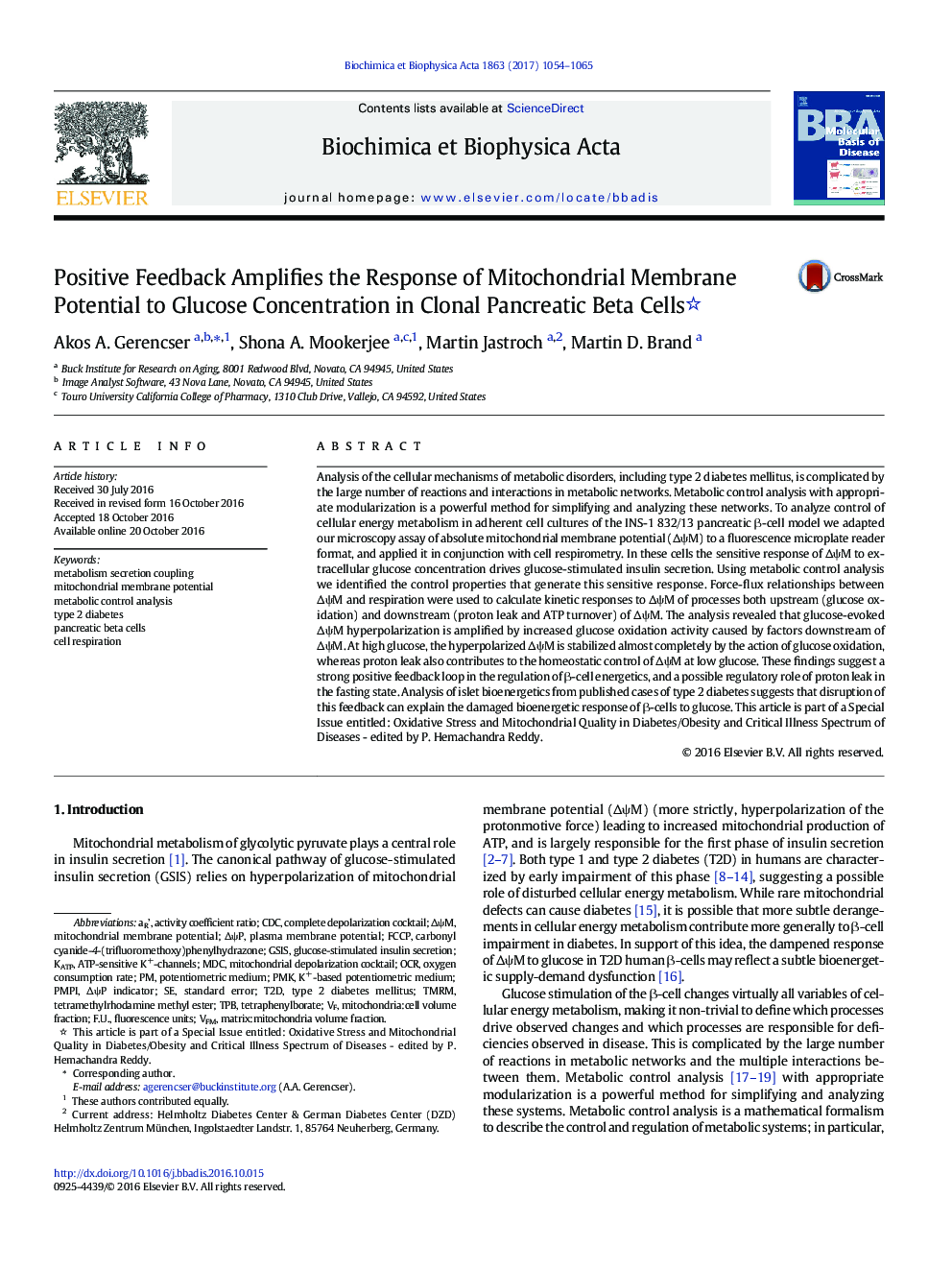| Article ID | Journal | Published Year | Pages | File Type |
|---|---|---|---|---|
| 5501089 | Biochimica et Biophysica Acta (BBA) - Molecular Basis of Disease | 2017 | 12 Pages |
Abstract
Analysis of the cellular mechanisms of metabolic disorders, including type 2 diabetes mellitus, is complicated by the large number of reactions and interactions in metabolic networks. Metabolic control analysis with appropriate modularization is a powerful method for simplifying and analyzing these networks. To analyze control of cellular energy metabolism in adherent cell cultures of the INS-1 832/13 pancreatic β-cell model we adapted our microscopy assay of absolute mitochondrial membrane potential (ÎÏM) to a fluorescence microplate reader format, and applied it in conjunction with cell respirometry. In these cells the sensitive response of ÎÏM to extracellular glucose concentration drives glucose-stimulated insulin secretion. Using metabolic control analysis we identified the control properties that generate this sensitive response. Force-flux relationships between ÎÏM and respiration were used to calculate kinetic responses to ÎÏM of processes both upstream (glucose oxidation) and downstream (proton leak and ATP turnover) of ÎÏM. The analysis revealed that glucose-evoked ÎÏM hyperpolarization is amplified by increased glucose oxidation activity caused by factors downstream of ÎÏM. At high glucose, the hyperpolarized ÎÏM is stabilized almost completely by the action of glucose oxidation, whereas proton leak also contributes to the homeostatic control of ÎÏM at low glucose. These findings suggest a strong positive feedback loop in the regulation of β-cell energetics, and a possible regulatory role of proton leak in the fasting state. Analysis of islet bioenergetics from published cases of type 2 diabetes suggests that disruption of this feedback can explain the damaged bioenergetic response of β-cells to glucose. This article is part of a Special Issue entitled: Oxidative Stress and Mitochondrial Quality in Diabetes/Obesity and Critical Illness Spectrum of Diseases - edited by P. Hemachandra Reddy.
Keywords
VFMF.U.PMPIPMKATP-sensitive K+-channelsGSISTMRMOCRKATPT2DMDCFCCPTPBCDCΔΨmTetraphenylborateMetabolic control analysisGlucose-stimulated insulin secretioncell respirationstandard errorType 2 diabetesType 2 diabetes mellitusPancreatic beta cellstetramethylrhodamine methyl esterOxygen consumption ratefluorescence unitsPlasma membrane potentialMitochondrial membrane potentialCarbonyl cyanide-4-(trifluoromethoxy)phenylhydrazone
Related Topics
Life Sciences
Biochemistry, Genetics and Molecular Biology
Ageing
Authors
Akos A. Gerencser, Shona A. Mookerjee, Martin Jastroch, Martin D. Brand,
